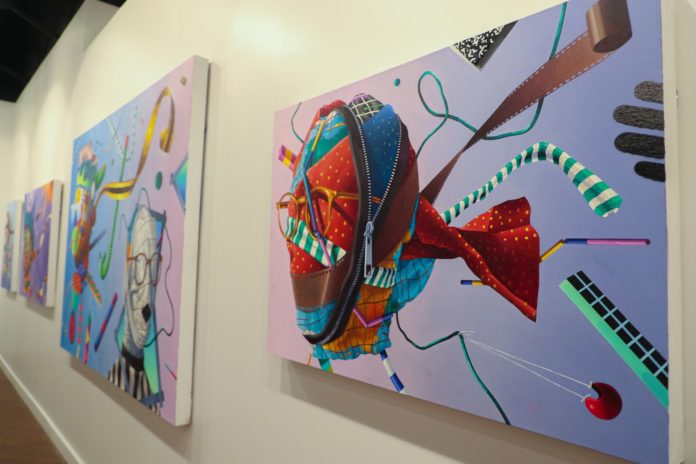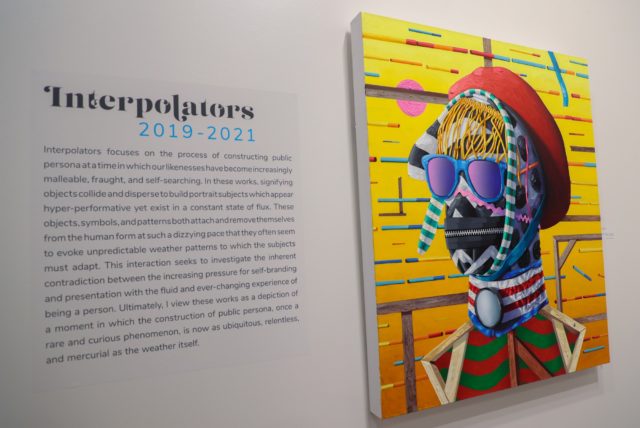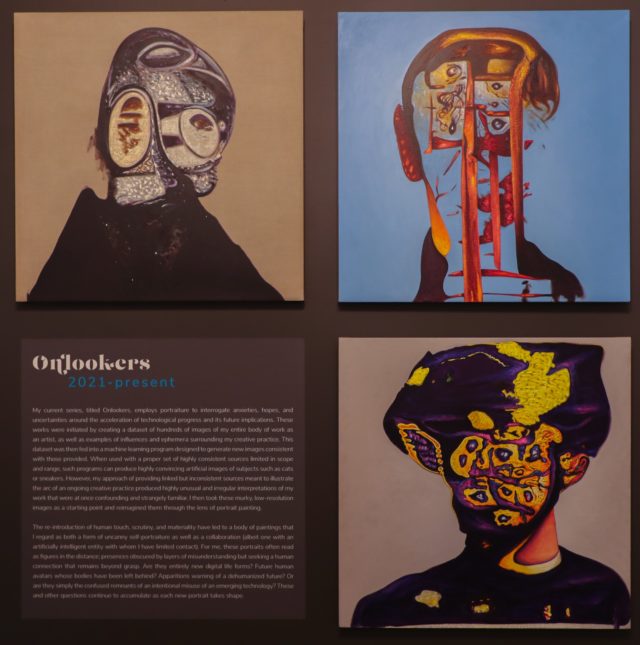
By Avery Ballmann | Staff Writer
Artist John Harlan Norris took portraits to a new light in his recent exhibit called “Portrait Procedures,” a series of paintings that reflect the fast-paced world of technology and social media.
Norris, who is also an assistant professor of art at the University of Kentucky, has displayed his works in galleries in the United States, Europe, Asia and South America. Norris’ four series, which have been created over a span of 10 years, lined each wall of the exhibit.
“Portrait Procedures” will be displayed at the Martin Museum of Art until April 3, and there is no reservation necessary unless you want a guided tour.

Elisa Crowder, our tour guide and education coordinator for the museum, explained that this painting is what the artist might like to do on the weekend. In this series, Norris’ goal is to highlight the objects and activities that define a person. In all of the paintings the colors are vibrant and the strokes are detailed. Other paintings in this series were “Naturalist” and “Programmer.” Crowder constantly asked the group what mood each painting portrayed and how it made them feel. “Occupants” gave a mysterious but detailed feel that some of us couldn’t quite figure out.

“Ultimately, I view these works as a depiction of a moment in which the construction of public persona, once a rare and curious phenomenon, is now as ubiquitous, relentless and mercurial as the weather itself,” Norris said in a pamphlet from the exhibit.
This is why in “Narrator,” objects of camera film, wires, journals and fabric are flying past the character in a chaotic motion. In the painting “Sequencer,” bright colors of what appear to be rain fall all around the covered up face. In a world driven by social media, appearance and image can be overwhelming for those who try to follow the trends.

She explained it is the wooden framework that goes behind the canvas. Norris used this everyday neglected object and created portraits from them. Paintings from this series included “Heatseeker” and “Projector.”
As the tour looked closer at the painting, they began to see a piece of stretcher create a nose, then a head and then an entire body. According to Norris, this series focuses on abstract characteristics of a person such as motivation and transition. While this series is not a typical portrait, it does resemble the inner workings of change all humans experience.

Santa Fe senior Peyton Merchant experienced her first time at the museum during this tour. She said she liked this series the most because it was unique.
“You don’t like it, but you can’t help but gravitate to it,” Merchant said. “Those are the ones that stuck out to me the most because there was so much uncertainty and I had no idea what I was looking at. I wanted to know more.”
Norris took all of his works he had created and works that had inspired him and made a data set out of them. He logged them into a computer program that created new images. However, the images were altered into something dark and disturbing. All of the paintings were labeled “Untitled.” Norris took those images generated by the program and created this series. The computer attempted to make a neck, eyes and a mouth but they weren’t quite right.
Norris said these works are to “employ portraiture to interrogate anxiety, hopes and uncertainties” around the acceleration of technology in our daily routines.
“The benefit of arts is that it helps you see creative ways to think outside the box, new ways to challenge yourself mentally and emotionally and hopefully inspire you,” Crowder said. “We have a lot of different kinds of art here, it’s not all gonna be art that you like.”
Though this exhibit seems mysterious and depressing, it gives the viewer an opportunity to evaluate how technology is affecting their persona and character. It challenges the viewer to see if the price of their mental health is worth keeping up with social media.





